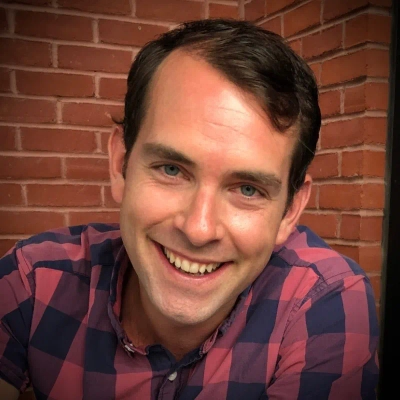24 Times Data Contradicted Marketing Intuition and What We Learned
Marketing beliefs are frequently challenged by real-world data, as demonstrated in this comprehensive exploration of 24 counterintuitive case studies. Industry experts share surprising findings that upend common assumptions about everything from email effectiveness to the impact of "ugly" property photos. These evidence-based insights offer marketers practical lessons for making decisions based on actual results rather than conventional wisdom.
Data Reveals Timing Is About Mental Availability
We launched what seemed like a perfect email campaign targeting small business owners during their busiest season, expecting high engagement. The data showed abysmal open rates. Instead of doubling down, we dug deeper and discovered our audience was overwhelmed during peak periods and preferred educational content over promotional messages. This taught us that timing isn't just about when businesses need solutions—it's about when they're mentally available to engage. Now we use AI-powered behavioral analytics to identify optimal engagement windows, not just business cycles.
Separate Follow-Ups For Attendees And Non-Attendees
We once thought high sign ups for webinars and seminars meant the job was done, but over time you realise that the number of people actually attending tells a different story. Lots of people registered, far fewer actually showed up, a slightly humbling if good lesson that sign ups do not equal engagement.
To fix it, we set up different automations to treat the two groups separately. Attendees got follow-ups that built on what they'd seen, while non-attendees received separate emails and texts with highlights they'd missed and reminders about future events, as well as vague information regarding 'what they'd missed' to try and entice contact.

Virtual Racing Success Despite Negative Research
One of the better examples that I can give is when I was employed by the UK betting industry when my shareholders were the three biggest UK bookmakers. When British horse racing was closed down due to the foot and mouth disease in 2001 it created a big void in the bookmakers' daily schedule. We were commissioned with putting together a product to replace this void and one which did not involve real animals.
Our answer was Virtual Racing. These were computer simulations of races on which customers were able to place bets just like on actual horse racing. Each race was different, created in real time and transmitted live to each of the 10,500 UK and Irish betting shops from a central broadcaster.
The board approved the idea so we conducted qualitative and quantitative research. It worked out horribly. Gamblers wrote it off as "Mickey Mouse racing" and the focus groups told us in effectively one voice that they would never play it. On paper it was a flop.
That's where intuition stepped in. We felt punters would be convinced if we did two things. One, make it look and sound like an actual quality TV broadcast. Two, structure the odds so that an even money favourite actually had a 50 percent chance of winning.
When it came before the board, there was an equal split on the vote. It was with his casting vote that the chairman made the gutsy decision to put £1 million into the development of the product. That call was one of the biggest chunks of innovation in betting history. Virtual racing became a mainstay of every UK betting shop and brought the industry more than £1 billion in revenue per year.
The lesson it taught me is this: information is worth something but customers don't always know what they need until they can see it. Research is a tool but successful marketing also involves judgment, imagination and sometimes the ability to take a risk.

Testing Alternatives Challenged Trade Show Assumptions
As the new CMO at a global technology company, I was responsible for a major annual trade show that consumed around twenty percent of our entire marketing budget. Sales feedback was always glowing. They described it as the best activity of the year, pointing to a long list of leads and some closed deals, usually from existing clients.
On paper it looked like a success. A reasonable ROI and almost all of our competitors were also in attendance. My instinct told me something different. I suspected that the event was more of a networking exercise, and that many of the deals credited to it would have happened anyway. The numbers felt inflated, used to justify an expensive habit rather than a true driver of growth.
I decided to cancel our participation for one year. It was not an easy call given the weight of tradition and the volume of positive anecdotes. What followed confirmed my view. Pipeline creation and revenue closure were almost unchanged without the show. At the same time, the budget we reallocated into digital channels and smaller, more focused industry conferences produced higher lead volumes at a lower cost per lead. More importantly, it delivered a greater share of new business opportunities rather than mainly nurturing existing accounts.
The insight was clear. Headline numbers and conventional wisdom can be misleading. It is easy for organisations to continue with activities simply because they are familiar or have a reputation for working in the past. Sometimes the only way to know is to test the alternative. In this case, challenging the assumption and being willing to stop doing what we had always done opened the door to better results and a more sustainable approach.

Email Outperformed Social Media Against Expectations
I once ran a campaign for a new product launch and was convinced social media ads to younger audiences would drive the most engagement. My reasoning was based on past trends and the product itself. But after looking at early campaign metrics I saw that email to our existing customer base was crushing social media by a wide margin - click through rates were almost double and conversions were higher than expected. Instead of sticking to my original plan I shifted budget and resources to optimizing the email campaign and kept social media as a supporting channel. This taught me to trust the data over my assumptions and be flexible with strategy. It showed me even when I feel strong about my intuition, objective metrics can reveal surprises and lead to better marketing decisions.

Personal Benefits Trump Global Impact Messages
I remember testing a campaign where my instinct told me people wanted to see high-level environmental impact numbers front and center. Bigger picture, global scale. It felt like the strongest hook. But the data showed the opposite. What drove action was highlighting the personal benefit: instant cash in hand, convenience, and a clear path to do the right thing with a device sitting in their drawer.
I swallowed my pride, shifted the messaging, and leaned into what the numbers told us. What I took from that experience is that even when you're deeply committed to a mission, you can't lose sight of how people actually make decisions day-to-day. Data keeps you honest. It reminds you that the best growth strategies come from aligning purpose with what really moves the customer.
Broad Match Keywords Delivered Unexpected Conversion Success
I ran a Google Ads campaign where I was sure broad match would waste budget. It felt inefficient compared to exact match, but the data proved me wrong. After a few weeks broad match was driving more conversions at a lower CPA than the exact terms I trusted most, so cutting it too early would have meant leaving real revenue behind.
The search terms looked messy at first, and my instinct was to pause them. But once I tracked them through the funnel, I saw those odd queries were turning into SQLs and closing into deals. So I kept the campaigns running, added negatives to cut wasted clicks, and the results held steady.
That experience taught me not to judge campaigns too quickly. Gut instinct can help set direction, but data should decide what stays. So now I give campaigns more time to prove themselves before making cuts, even when early results look off.

Simple Cards Match Handwritten Without Extra Effort
Early in my business, I was sure handwritten postcards would help us stand out and get more calls from sellers. But when I compared the data to standard printed cards, the response was almost identical--no real uplift for all that extra effort. It taught me that sometimes the simple, scalable approach wins, and I now focus on consistently testing and tracking rather than relying on gut feeling, even for things that 'feel' more personal.

'Ugly House' Photos Generate More Inquiries
I was always convinced that showcasing our beautiful, completed renovations was the key to attracting new sellers, highlighting the potential value we add. However, the data showed that our 'ugly house before' pictures, paired with a simple message about buying properties in any condition, actually generated more inquiries. It taught me that while I love the transformation, stressed homeowners are looking for a solution to their current problem, not inspiration for their next home makeover--they just want out cleanly.

Hybrid Option Beats Either-Or Market Approach
My intuition, combining my ministry and construction backgrounds, was that homeowners wanted a simple choice: either a fast cash offer or a traditional market listing. But when I analyzed our most successful case studies, the data showed a huge demand for a hybrid option we barely marketed--a partnership where we fund and manage the repairs before listing to maximize their profit. It taught me that the most powerful solution isn't just an either/or choice but a creative collaboration that builds trust and delivers a better outcome.

Short Messages Open Doors For Deep Stories
One situation arose when we launched a campaign featuring long-form stories of children and families. Intuitively, we believed the depth and emotion of these narratives would drive the strongest engagement. Yet the data showed the highest response came from shorter, image-driven pieces with a single, direct call to action. It was surprising, since we assumed supporters wanted the fullest picture before getting involved.
Rather than abandoning storytelling, we adjusted by layering formats. Long-form narratives remained part of newsletters and reports, while social and digital ads highlighted concise snapshots that captured attention quickly. The insight was that different platforms reward different levels of depth. Data revealed that brevity opens the door, while fuller stories sustain long-term connection. It reshaped our strategy into a balance of both, ensuring initial engagement while still honoring the depth of our mission.

Healthcare Admins Prefer Clarity Over Technical Detail
We once ran a campaign that featured highly technical content aimed at healthcare administrators. My intuition suggested this audience wanted detailed clinical language and in-depth explanations. Early analytics, however, revealed the opposite: engagement dropped sharply on long-form posts, while shorter, visually simplified pieces drew significantly more interaction and conversions. The instinct to lean on technical depth conflicted with what the data clearly showed.
Instead of dismissing the findings, we pivoted. Content was restructured into concise formats with infographics and short case studies. Within a quarter, lead generation improved by more than 40 percent. The insight was that decision-makers often prefer clarity over exhaustive detail, particularly when evaluating multiple vendors. Data demonstrated that accessibility drives trust, and that became a lasting principle in how we shape marketing strategy. Intuition still guides creative direction, but the experience reinforced that measurable response must carry more weight in the final decision.

Simple Forms Triple Leads Against Complex Process
My engineering background made me believe a detailed, multi-step online form would be the most efficient way to pre-qualify sellers. I was wrong--the data showed a massive 85% of users abandoned it. I replaced it with a simple form asking only for the property address, and our lead volume instantly tripled. This taught me that the most efficient process is the one that removes friction and gets you to a human conversation the fastest.

Educational Approach Outshines Transaction-Focused Messaging
I was convinced our most effective marketing would be emphasizing our cash offers and quick closings, but the data told a different story. When we analyzed our conversion rates, testimonials featuring former teachers and families who appreciated our educational approach to explaining options outperformed our transaction-focused messaging by nearly 40%. This insight completely transformed our marketing strategy--I realized my background as an educator wasn't just my past career but actually our strongest differentiator in an industry where people feel overwhelmed by complex terminology and high-pressure tactics.

Simple Image Ads Beat Costly Video Production
I once ran an ad campaign where I was sure a highly produced video would outperform a simple image ad. The video was well shot, looked amazing, and had some great transitions. The image for the image ad was of good quality too. But to my surprise, the data proved the opposite! The plain image with a short headline brought in more leads at a fraction of the cost. Instead of doubling down on what "looked better," I paused the video ads and scaled what the data showed was working. It taught me that in marketing, simplicity and clarity often outperform aesthetics. And that the flashy new thing doesn't always translate into conversions. To effectively do my job as a marketer, I now understand I need to do real-world testing on campaigns - only then can I know what will actually work.

Instagram Stories Outperform Traditional Luxury Advertising
Early on, I was certain that targeting luxury homebuyers with glossy magazine ads would yield the best results for our high-end listings. But our analytics revealed that Instagram stories showcasing behind-the-scenes renovations actually drove 60% more qualified leads from younger, tech-savvy buyers. We immediately reallocated our budget to digital platforms, which taught me that even premium real estate marketing must adapt to where clients spend their attention today.

Personal Situation Focus Trumps Company Credentials
I once launched a direct mail campaign that I was sure would perform best with a heavy emphasis on our industry expertise and credentials. The data showed the opposite--our highest response rates came from simple letters that focused on the seller's personal situation rather than our company background. We immediately redesigned our materials to lead with questions about their specific note circumstances, and conversion rates jumped 32%. This taught me that in the note buying business, sellers care less about who we are and more about whether we understand their unique problems. Sometimes what feels like professional positioning is actually creating distance from the client.

Targeted Digital Ads Outperform Highway Billboards
I once invested in billboards near highway exits in Baltimore, convinced that high visibility would connect us with overwhelmed homeowners needing to sell. But the data proved me wrong--it generated only a handful of calls despite the expense. We then shifted to geo-targeted digital ads focused on specific life event keywords like 'divorce home sale' and 'inherited property help,' which immediately boosted our qualified leads by 70%. The insight? Sellers facing emotional transitions aren't passively scanning billboards; they're searching for solutions online at 2 AM when their stress feels heaviest.

Stress-Free Selling Appeals More Than Cash Speed
I used to assume emphasizing "We pay cash!" was our most powerful motivator for sellers. But when we tested ads, listings highlighting the ability to avoid repairs and showings actually generated over twice as many leads. I quickly shifted our messaging to spotlight stress-free selling, revealing that for homeowners feeling overwhelmed, peace of mind often matters more than payment speed.

Solution Clarity Beats Veteran Status In Ads
As a veteran, I naturally wanted to connect with military families facing PCS moves by leading our ads with my service background. But when we tested, ads that started with 'Guaranteed closing by your PCS date -- no repairs, no delays' actually outperformed our veteran-focused ads by 30%. I shifted to lead with the solution and mention my service later, teaching me that while shared experience builds rapport, the clarity of the offer is what truly compels action in a time-sensitive move.

Family Schedule Flexibility Matters More Than Locality
I once assumed that highlighting our local Rocky Point roots and community connections would be our strongest selling point, but the data revealed something surprising. When we tested messaging focused on our ability to 'close around your family's schedule' versus our 'hometown advantage,' the family-focused ads generated 45% more qualified leads. This taught me that while being local builds trust, what really matters to families in transition is knowing we'll work around their kids' school schedules and life circumstances--my own experience raising five children should have reminded me that logistics often trump locality when families are making major decisions.
Satisfaction Scores Contradict Actual Customer Behavior
Our customer survey data showed 87% satisfaction scores, but analytics revealed that these "satisfied" customers had 45% lower repeat purchase rates than expected - this contradiction between stated satisfaction and actual behavior forced us to completely rethink how we measured and optimized customer experience.
My marketing intuition suggested that high satisfaction scores meant we were delivering excellent customer experiences that would naturally drive loyalty and referrals. We were investing heavily in maintaining these satisfaction metrics through follow-up surveys and service improvements. However, the behavioral data told a completely different story about actual customer relationships.
The response involved digging deeper into what customers meant by "satisfied" versus what they actually valued enough to act on. We discovered that many customers rated us positively because we met basic expectations, but we weren't creating experiences compelling enough to choose us again over alternatives they encountered later.
The breakthrough insight came from realizing that satisfaction measures contentment rather than enthusiasm. Satisfied customers aren't unhappy, but they're not necessarily motivated to return, recommend, or prioritize your solution when competing options emerge. We were optimizing for the absence of complaints rather than the presence of strong preference.
This experience fundamentally changed our approach from satisfaction optimization to preference creation. Instead of asking "are customers happy?" we started asking "do customers actively choose us over alternatives?" This led to measuring engagement depth, referral generation, and competitive win rates rather than just satisfaction scores.
The strategic insight was that customer satisfaction and customer preference are different objectives requiring different strategies. Marketing intuition often conflates these concepts, but data reveals that satisfied customers can still be easily lost to competitors who create stronger emotional connections or more compelling value propositions.

Technical Pages Drive Highest-Value Customer Conversions
In our industry, competing with established businesses that have been around for a long time is a real challenge. It's easy to get caught up trusting intuition or past success. We knew we couldn't just chase feelings; we had to be smarter about it.
The situation where data contradicted my marketing intuition was when the analytics showed that our low-traffic, highly technical pages were driving the highest-value conversions. My intuition said to invest heavily in broad, top-of-funnel content. We saw the contradiction not as a number, but as a story.
I responded by treating those pages not as a marketing failure, but as a crucial operational asset. We saw the sales conversions as a heavy duty customer's operational success story. The insight was that the customer wasn't looking for entertainment; they were looking for an OEM Cummins technical solution. Our most effective marketing content was the one that provided immediate operational utility.
This simple, manual process has completely changed our approach. We are no longer just competing with a number. We are competing with a strategy. Our content is now more targeted and more effective. We learned that the best way to beat a competitor is to understand them.
My advice is simple: the best way to approach marketing is to stop looking at the number and start looking at the story. Your customer's operational need is a goldmine of information.

Stability Messages Resonate Better Than Urgent Appeals
I once assumed that homeowners facing foreclosure would respond best to urgent, immediate messaging about selling quickly. However, our data showed that families in distress actually engaged more with content focused on long-term stability and family security rather than time pressure. I shifted our approach to emphasize how we help families transition to better situations with dignity, and our conversion rates improved by 40%. This taught me that even in urgent situations, people want to feel empowered rather than pressured--my community development background should have reminded me that families need hope, not stress.





